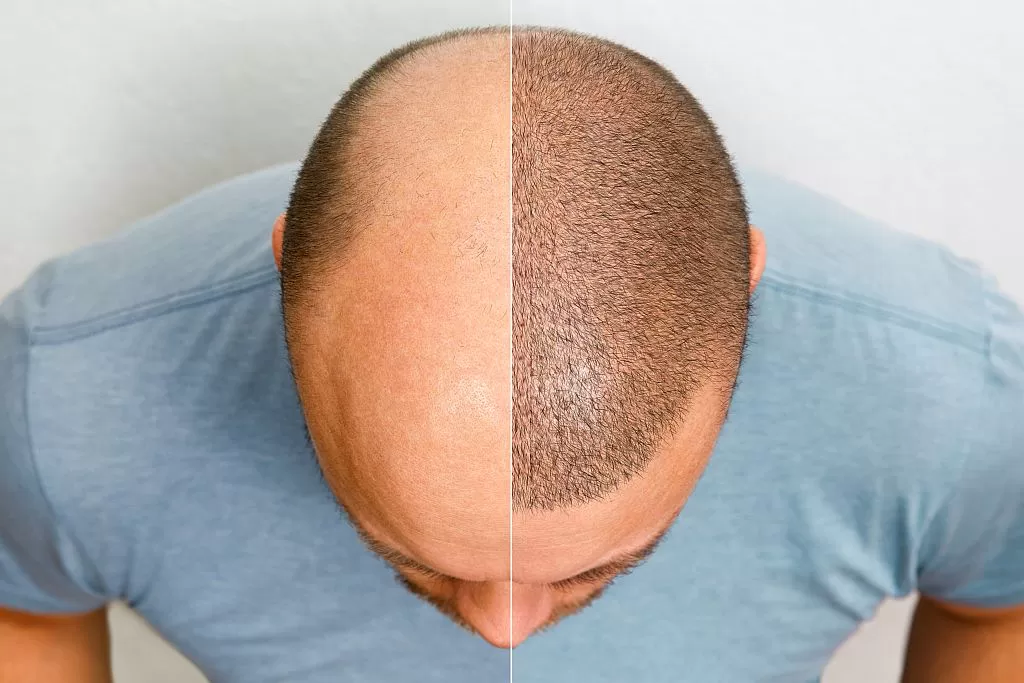Embarking on a hair transplant journey in Riyadh involves several well-defined steps, ensuring a structured and patient-centric process from initial consultation to post-operative care. Understanding each stage can help individuals feel more informed and confident as they pursue hair restoration. If you're struggling with hair loss, a hair transplant in Riyadh could be the permanent solution you've been searching for.
Step 1: Initial Consultation and Evaluation
The first crucial step is a comprehensive consultation with a qualified hair transplant surgeon in Riyadh. During this session, the surgeon will assess the extent and pattern of your hair loss, discuss your medical history, and understand your expectations and goals. They will examine your scalp, evaluate the quality and density of hair in the donor area (typically the back and sides of the scalp), and determine if you are a suitable candidate for a hair transplant.

The surgeon will also explain the different hair transplant techniques available (FUE, FUT, DHI), discuss the pros and cons of each, and recommend the most appropriate method based on your individual needs, hair characteristics, and desired outcome. This is an opportune time to ask questions, address any concerns, and gain a clear understanding of the entire process, including the potential results, recovery period, and costs involved. The surgeon may also take photographs of your scalp to document the current state of your hair loss and for planning the transplant procedure.
Step 2: Treatment Planning
Once you decide to proceed with the hair transplant, the surgeon will develop a personalized treatment plan tailored to your specific hair loss pattern and aesthetic goals. This plan will outline the number of grafts required to achieve the desired density and coverage in the recipient areas, the strategic placement of these grafts to create a natural-looking hairline and overall distribution, and the chosen transplantation technique.
The surgeon will artistically design the new hairline, taking into account your facial features, age, and natural hair growth direction. They will also determine the donor area from which the hair follicles will be harvested and calculate the number of grafts that can be safely extracted without compromising the density of the donor area. You will be provided with detailed pre-operative instructions, which may include guidelines on medications to avoid, lifestyle adjustments (such as abstaining from smoking and alcohol), and scalp preparation.
Step 3: Preparation for the Procedure
On the day of the hair transplant, you will typically arrive at the clinic a few hours before the scheduled procedure. The surgical team will prepare the donor and recipient areas by cleaning and sterilizing the scalp. Local anesthesia will be administered to numb both areas, ensuring a comfortable and pain-free experience throughout the surgery. In some cases, a mild sedative may also be given to help you relax.
Step 4: Donor Hair Harvesting
This is the core of the hair transplant procedure and varies depending on the chosen technique:
- Follicular Unit Extraction (FUE): With FUE, the surgeon will use a specialized small punch tool to individually extract hair follicles from the donor area. Tiny, circular incisions are made around each follicular unit, which are then gently lifted and removed. This process is repeated until the required number of grafts is harvested. The small wounds in the donor area heal naturally, leaving minimal, dot-like scars.
- Follicular Unit Transplantation (FUT): In FUT, the surgeon will surgically remove a strip of hair-bearing skin from the donor area. The edges of the donor site are then stitched together, leaving a linear scar that is typically concealed by the surrounding hair. The removed strip of skin is then meticulously dissected under a microscope by trained technicians to separate individual follicular units.
Step 5: Recipient Site Creation
Once the donor hair follicles are harvested and prepared, the surgeon will create tiny incisions in the recipient areas where the new hair will be transplanted. The angle, depth, and direction of these incisions are crucial for achieving a natural-looking hair growth pattern. The surgeon's artistic skill and experience play a significant role in this stage.
Step 6: Graft Transplantation
The extracted follicular units are carefully and precisely implanted into the recipient sites. The surgical team works meticulously to ensure the grafts are placed at the correct density and orientation to match the natural hair growth and create a seamless blend with the existing hair. This stage requires patience and attention to detail to achieve optimal aesthetic results.
Step 7: Post-Operative Care and Recovery
After the transplantation is complete, the recipient and donor areas will be cleaned and bandaged. You will receive detailed post-operative care instructions from the clinic, which are crucial for proper healing and graft survival. These instructions typically include:
- Medications: Pain relievers, antibiotics (to prevent infection), and sometimes anti-inflammatory medications may be prescribed.
- Scalp Care: Specific guidelines on washing your hair, avoiding harsh shampoos, and gently handling the transplanted area.
- Activity Restrictions: Avoiding strenuous activities, heavy lifting, and excessive sweating for a certain period.
- Sleeping Position: Elevating your head while sleeping to reduce swelling.
- Follow-up Appointments: Scheduling follow-up visits with the surgeon to monitor your progress and address any concerns.
Step 8: Hair Growth and Results
It's important to understand that the results of a hair transplant are not immediate. In the initial weeks after the procedure, it is common for the transplanted hair to shed. This is a normal part of the process, and new hair growth will typically begin within 3-4 months. The transplanted hair will gradually grow thicker and longer over the following months, with noticeable results usually visible around 6-9 months. The final results of a hair transplant can take up to 12-18 months to fully manifest, revealing a fuller and more natural-looking head of hair. Throughout this period, the clinic will likely schedule follow-up appointments to monitor your progress and provide guidance.




Comments